After an energetic walk on the coast with my friend, we sat on the village green and I was introduced to a thatcher. My friend knows every human person aged between 24 and 58 in the whole of Devon, Cornwall, Somerset and Dorset, so it made total sense that he knew the thatcher. The thatcher said that even though he was still relatively new to thatching in the area, and we were in the midst of a pandemic, he was getting lots of work, especially as he was active on social media, whereas most of the other thatchers he knew weren’t and didn’t usually even answer their phone, and in fact getting them to do your thatching often meant waiting in their favourite pub until you found them there then asking them in person to do the thatching. A week later, I walked to a pub whose thatched roof caught fire in 2016, taking most of the pub down with it. I wasn’t looking for a thatcher; I was just looking for the single pint of ale that perfectly tops off a good walk. When the pub burned down, some things had been lost forever, such as a note the landlord – abiding by an old building tradition – had left in the thatch for the roof’s next thatcher, but other things had been found, such as a hidden archway and part of an extremely old fireplace. In the 1800s, the women in the neighbourhood had a reputation for drinking to excess. As I sat outside the rebuilt pub and drank my pint, I wondered if my great great grandma, who liked to drink and lived very close to here, had ever downed a pint here, or even sat where I was sitting. A smartly-dressed woman, probably in her early sixties, strolled past me towards the front door of the pub, carrying a ketchup bottle. A man on a nearby table laughed and asked her what she was doing with it. “I bring my own,” she said. “They don’t have the type I like.”
If you want to experience some world class shade and diva-like standards, try the inland travel writers of the early 20th Century. In 1922’s Highways And Byways In Devon And Cornwall, Arthur J Norway describes Calstock – a lovely place, in the shadow of a huge Victorian railway viaduct on the Cornish bank of the Tamar – as “a straggling hillside village of no great picturesqueness”. If that’s what he makes of Calstock, I shudder to think what his assessment might be of the mining villages in Nottinghamshire where I grew up. Perhaps Calstock might have seemed a bit down on its luck a century ago, as some of its once-booming industry had declined, but it would no doubt still have been a magic valley of pretty cottages hidden on limestone cliffs in steep thick oak and beech woodland, verdant tiered gardens and wonderfully higgledy-piggledy streets, all in the shadow of the huge stone railway arches towering over its fat jackknifing river. A couple of miles away in one direction it would still have had the Tudor house of Cotehele, with its domed wildflower dovecote, and the same distance in the other it would still have had the abandoned, eerie Okel Tor mine, where until the 1880s boys as young as nine followed their fathers down into the shaft and shovelled arsenic protected only by cloths over their mouths and sacking over their hands, all because it helped Americans kill beetles. I have been combining checking out houses I can’t buy with walking this month, and that’s why I walked this route. One of the houses, a few miles further down the river, but not on the river, was one not desperately out of my price range, but I suspected it wasn’t right for me and wanted to see if my suspicions were true. The other wasn’t even a house, just a plot of land, and I could afford that far less, but I was intrigued by it, because for someone unlike me, who could afford it, it seemed weirdly reasonable in price. It turned out to be right next to a sewage works. I pictured the life here of the richer person who wasn’t me and bought the building plot: the pleasant sensation of waking up next to the river, then the comedown of remembering the large sewage works in front of you, then the realisation “But I can walk to the old mine – that will cheer me up, even though it’s eerie and I can feel the souls of dead children under the heather!” After many days of toing and froing between the mine and the sewage works and experiencing the repeated, accompanying seesaw of emotions, the owner would decide that it was probably time to build a house, and stop sleeping on the cold wet ground. The discovery of the proximity of the building plot to the sewage works is what seems to me a typical example of the rule that there’s always a catch in househunting, especially when you haven’t got enough money and everything you wish you could have is being bought quickly by people who have. The fairly priced bungalow in the nice town is fairly priced because a six-lane motorway runs through its bathroom sink. The small cottage on the no-through road in the quaint village is sixty grand cheaper than the other small cottages on the no-through road in the quaint village because mortgage lenders won’t let you buy it, owing to the fact that it is made entirely of wool.
I get excited by architecture – architecture that has love in it, the kind filled with small generous thoughts about the way a person might live most happily within walls – but I don’t like the materialistic, frustrated state I descend into when that excitement is combined with trying to find a house of my own. I don’t like the way househunting makes you want so hard, tells you that you should be unhappy with your lot, whispers its wicked song of “Push, strive, push” in your ear at every opportunity. But my rented house is damp and all the attendant problems of that have made me ill, I don’t want to give money to landlords any more, house buying is not quick, and I can’t help admiring nice walls and floors and windows and ceilings, so it looks like I’m going to have to put up with this state for a while, whether I like it or not. I tell myself my way of combining a viewing of a house with a walk is a way of getting a greater knowledge of an area, but it’s ultimately more a way of offsetting that materialism with something a bit pure that makes me feel less like someone I want to slap. You stand in the vacant possession bungalow, picturing what the living room might look like with hardwood floor instead of pink carpet, wondering whether your books will fit, visualing the garden after you’ve removed the concrete pigeon nest and massive gnome and filled it with Cordylines and Trachycarpus, calculating whether there’s any way you can make it work on a budget that might have been kind of ok in 1998, wondering if you can be arsed to be the person you need to be to try to make it work. Then you walk along a bridleway and listen to the soft strong wingbeat of a couple of Canada geese above you, tell a bullock in an affectionate way to go fuck itself, admire an old horseshoe repurposed as a gate latch, pop a few quid in an honesty box outside a cottage for a jar of homemade chutney, and it all makes you feel a bit better, like someone deft and kind has vacuumed the interior of your head.
There are creeks everywhere in south Cornwall. They become more frequent the further you stray from the river Tamar, until the land thins and the county threatens to become just a creek, and nothing else. When you’re beside these creeks, there’s always the sense that something fantastical yet organic might happen to you. A ghost ship could rise from the water, full of treasure and men with seaweed faces. A stooped figure in an old crumpled hat could beckon you into a cottage and lead you down some stairs leading to 1870. But I wasn’t on the creek near Boddinick when something fantastical yet organic happened to me, the other week; I was in a fairly ordinary-looking field above the creek. The fantastical and organic thing that happened was that about sixty pristine giant puffball mushrooms were growing in the field. I was about a mile and a half from my car and initially had my eye on taking three back with me but when I picked one I realised this would not be possible, due to the weight of the mushroom, and the fact that I have been recently weakened by shingles. Even if I hadn’t been weakened by shingles, two giant puffball mushrooms would have been pushing it. There were several walkers coming in the opposite direction on the path above the cliffs and as I passed them, carrying my giant puffball mushroom, social distancing was at times challenging, no less so than if I had been walking with a squat and needy friend who insisted on being abreast of me at all times. The lanes leading back up to the A390 from Boddinick are narrow, and often require a reverse manoeuvre to make way for other cars, so I strapped the giant puffball mushroom into the passenger seat of the car with the seatbelt, for fear of the puffball mushroom getting whiplash or – worse still – being thrown violently against the windscreen and exploding. Doing this made me feel more still like I was not with a giant mushroom at all but an individual with feelings and hopes and opinions, and I began to wonder if the album I had on in the car – Taylor Swift’s ‘Folklore’ – would be the kind of album the giant puffball mushroom would appreciate, or whether I should put on something more autumnal and British instead, and as I invented this personality for the puffball mushroom – whose species were once unfairly known as “poor man’s veal” – I began to feel more and more callous about my long term plans for our relationship, which were not “kind” at all, despite the pseudo solicitous way I was acting now, and would involve me frying my passenger later that evening with a large amount of garlic and butter.
I always seem to end up at Brent Tor, on the west edge of Dartmoor, when I’m unwell. When I say “always” I mean “twice”. I attempted to climb all 1100 feet of it in 2016, with flu, and gave up at the halfway point, but this time, with shingles, and the beginnings of a cold and a blood clot, I managed it. There wasn’t a lot you couldn’t see from the top, a rocky outcrop memorably described by Julian Cope as “an extremely extinct volcano”, where the church of St Michael has perched impractically since 1140, or arguably earlier. It is a building that looks less like it was erected and more like it landed there after being elbowed out of an angry cloud. The lanes and tracks below are lonely places where loose cows seem shocked and angry to see you and ponies plod along the tarmac in the twilight like unresolved spirits. This was all in great contrast to the eastern edge of the moor I’d been on a couple of days before, where the trees wrap you in friendly arms, farmyard animals are nonchalant about human life and in a pub garden I witnessed a landlord take bets with friends that they couldn’t do a circuit of the lane encircling a much friendlier church under a pre-set time limit. As a prize, the landlord presented one with an expensive bottle of wine. “I don’t drink wine, never have,” said the winner. “This was made in Chudleigh!” said the landlord.
Above another church – many miles away, and very different again – where gravestones peered out over a river bend like curious windmill-headed men, I gazed over to the opposite side of the valley and was surprised to spot Kilmarth, the building where Daphne du Maurier wrote her LSD time travel novel The House On The Strand, although on further research I realised it was not Kilmarth, just another similarly enormous and isolated estuarine house on the other side of the hill from it. Who knows, perhaps du Maurier lived in it too, since from the best I can gather she lived in pretty much all the great big fuck off houses around Cornwall’s River Fowey at some point. I had recently watched a BBC documentary about du Maurier, from 1971, filmed at Kilmarth. “It isn’t really frightfully big,” she says of Kilmarth, which could comfortably be repurposed as a small comprehensive school. In the documentary, du Maurier, who is 64 but seems like 79 year-olds seem now, except somehow posher than even the poshest of them could quite be in this day and age, chats to the journalist Wilfred De’ath and takes him on a stroll over the clifftops towards Par harbour. De’ath is not notably overweight and was in his mid-30s at the time but moves with the shambling reluctance of something halfway between a bored teenager and a collection of eleven or twelve turnips knotted tightly into a bedsheet. A few years later, D’eath would find himself homeless, stealing from church collection boxes. His interviewing technique here, impudent and restless, as if he wishes he were elsewhere, seems to hint at his future life. His subject politely responds to his questions, but you get the sense she wishes she hadn’t agreed to all this and was instead alone, with her small dog, writing another unlikely acid flashback novel.
My main time travel destination at the present moment is about 50 miles down the coast from Kilmarth and a quarter of a century farther back in time: the village of Lamorna, about halfway between Penzance and Land’s End, directly after the Second World War. Here, amongst farmers and porto-hippie woodcutters, the occultist and artist Ithell Colquhoun bought a tiny live-in studio without electricity or running water and began to explore the countryside of the West Penwith district. But if you believe what Colquhoun – who, along with Barbara Hepworth, is one of two famous Cornwall-based artists to die in a house fire – says in her 1957 memoir The Living Stones, the place was getting a bit too touristy even then. Cornwall in the 1940s, before pay and display car parks and glamping, might seem like a soft focus watery utopia, but from Colquhoun’s perspective, at the time, it was a place where the rot had already set in, where the noise of automobiles and machinery was already cutting through everything precious about rural life. These days, Lamorna remains a narrow valley of storybook beauty, but there’s CCTV following you all the way down the lane to the beach car park. The creekside houses and artist huts look like fantasy living spaces, except they’re probably not, because if you live in them you’re no doubt subject to endless people walking and driving past, pointing at your house and talking about what a fantasy place to live it is. Also, a lot of them have probably got Section 106 holiday-home only restrictions on them, just like what sometimes feels like around half of the houses in the entire county. I wasn’t househunting on my trip to Lamorna, but one of my most common experiences while looking for houses in the south west generally is thinking “This little house looks nice” then realising “Oh, it’s got a restriction on it which means it can only be a holiday home and only rich people who already have a house can buy it.” Would it not help the current housing crisis a tiny bit to abolish these restrictions? Make these homes available to people who actually want to live in the countryside full time, in one house, rather than swan into it occasionally like visiting royalty. Revitalise communities! Even the score, just a bit! The one-room Vow Cave, where Colquhoun lived, has a ten month occupancy-only restriction on it, and is now worth approximately £300,000. When she moved away from it, in the late 50s, it was because she could not afford a house in the area, which is a pertinent bit of information for anybody struggling in the current artistic climate and believing that the creative people of the mid-20th Century could survive on talent alone and rock up at any house they wanted and buy it outright. Larmona must be still an extremely atmospheric place to live, especially in winter, if you’re actually there at that point, and not in one of your other seven houses in London, Bath and Monaco. In her time living in the valley there, beside the creek, Colquhoun would get periodically freaked by “an unaccustomed roar, deep-toned and musical” swelling up from the woods. It took a while before she discovered from a neighbour that the sound was the sea grinding the gigantic boulders on St Loy Cove, more than three miles to the west. I walked from Lamorna to St Loy last week and left my clothes and bag on top of these enormous boulders while swimming in the sea. It was calm weather and no disturbing roar was in evidence. The water was warmer than I expected and I swam out to a rock and jumped off it, got back out onto the shore and reached for my towel, thought better of the idea and swam back out to the rock and jumped off it again. I’d driven the two hours here from my house with a headache and a sore throat, feeling dreadful, hating the traffic, but the sea succeeded in turning my day around. I felt cleansed, inside and out. My phone buzzed, and revealed an unexpected, half-positive message about a house I was interested in. I bounced over the boulders, away from the beach, renewed, and as I did so an enormous rusty tripod in the back corner of the cove – a canonlike structure, pointing out towards the path of invading armies – stood guard. At one point, it had no doubt just been a weighty piece of junk that had fallen off a ship, but now, with the benefit of a period of years to settle and decay into its accidental home, it had gained the trustworthy nature of art.
My first ever novel, VILLAGER, is now up for funding. If you’d like to reserve a copy, you can do so here.
This is my most recent book.
If you feel compelled to, you can subscribe to this website, either just for email updates on new pieces, or for a monthly fee to help support me writing, via the home page.

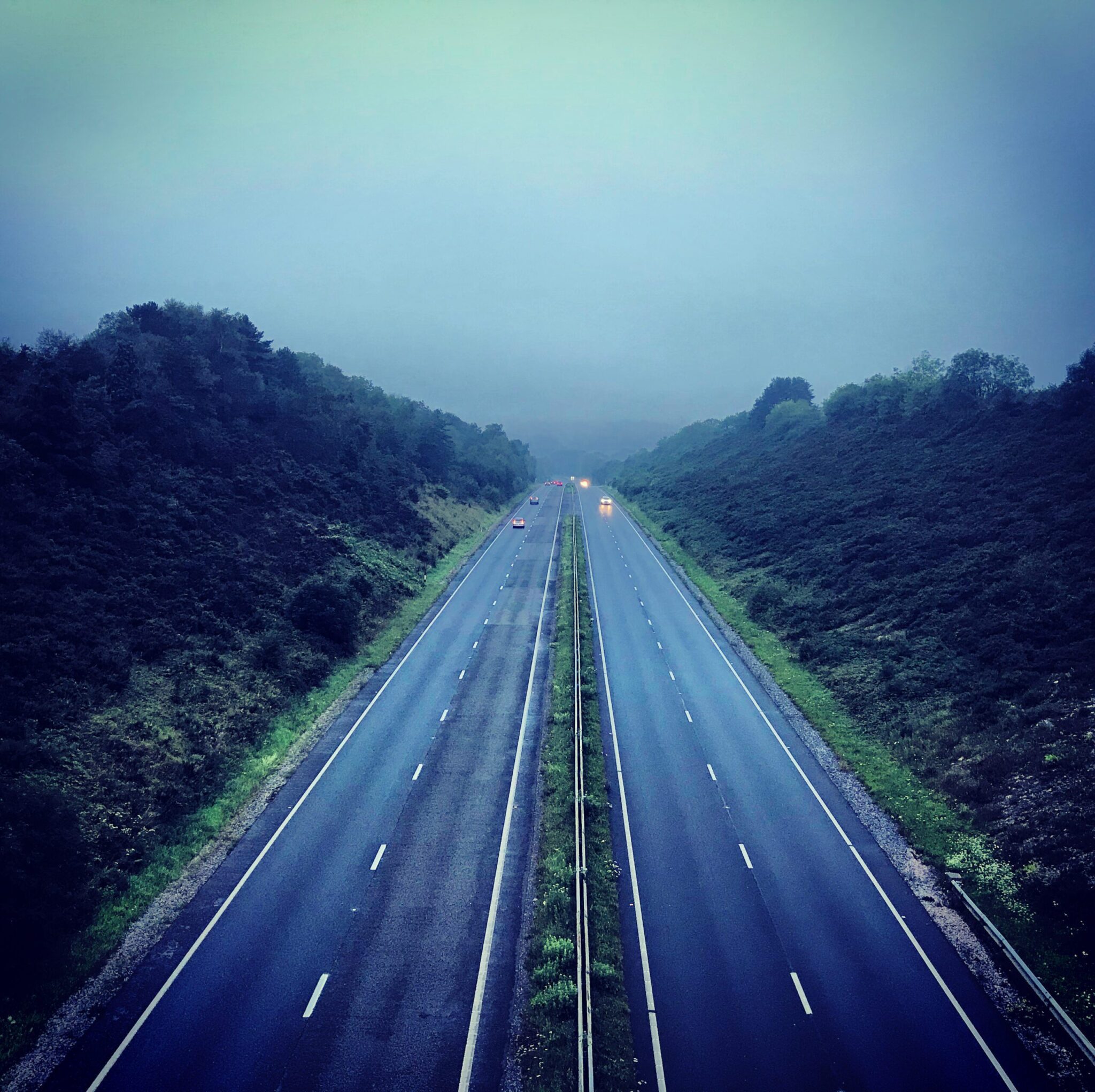
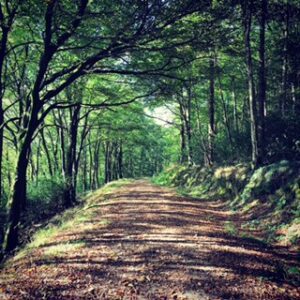
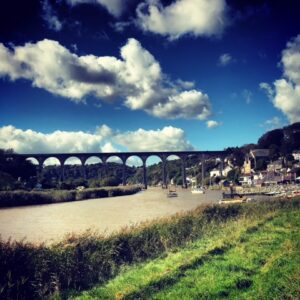
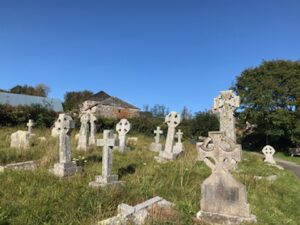
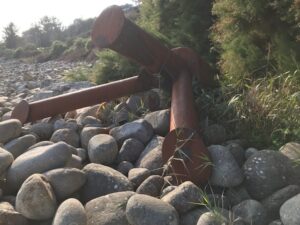
Beautiful writing. I live in Tavistock & have friends in Calstock. They tell me that it’s become suddenly unaffordable because it’s on a trainline, so if you don’t need to be on a trainline, look further afield. Tavistock is a great little town with everything you need & some great walks in all directions from your front door. Lockdown has made me appreciate how perfect it is, so don’t be put off. 45 minutes from Exeter by car for Exeter rail connections & airport. Regular bus service to Plymouth (ugh). Some quaint little villages and hamlets in the locality are worth exploring, especially if you’re not looking to make money from property, but are just looking for a home. Good luck. I house hunted for months & ended up buying the house I was renting, but it didn’t have a river running through it!
I always enjoy reading your words, Tom. Although I’ve never lived in Cornwall, a good friend of mine lived in Gweek and I had a wonderful time exploring the area with her; it’s so easy to imagine the places and people you describe. Your humour and observations give me a good chuckle. I hope you find the perfect house soon.
Lovely cheer up piece as usual Tom. Both Calstock and Lamorna have happy memories for me. Cream teas at Lamorna Pottery!
As a fellow not-quite-rich-enough house hunter with basic requirements well above his station, this really resonated. Thanks!
I could clearly picture in my minds eye all the places you describe. Walking and swimming with you.
Lovely. I wonder if you are aware of Amy Hale’s new book about Ithell Colquhoun, incidentally? Due out in the UK later this year, I believe, but already out in the US. The publisher is Strange Attractor Press (no idea who they are but they sound suitably unconnected to the obviously commercial publishers). She is on Twitter @amyhale93.
I love reading your pieces, Tom. I especially enjoyed the part where you got all Hannibal Lester about the puffball! Reading your writing about the south west really strikes a chord with me although I’m Warwickshire born and bred. Keep looking for your home, it will be there.
‘…moves with the shambling reluctance of something halfway between a bored teenager and a collection of eleven or twelve turnips knotted tightly into a bedsheet.’
This was a truly inspired bit of description and I could really see the man walking, a kind of louche lumpy shambling. Bravo Tom.
Good luck with the house hunting. The upper Tamar Valley does have some more reasonably priced spots, if you don’t mind being in that hinterland between moor and coast.
During the summer, there were quite a few houses up for sale along the Lamorna Valley, all looking very tranquil and artistic, but as you say Tom, too close to what is now a busy road down to the Cove. Have you read Derek Tangye’s chronicles of his life at Minack? Together with his wife, Jeanie, they wrote and illustrated some twenty books in a series entitled ‘The Minack Chronicles’ about their lives in a tiny cottage on the cliffs just to the west of Lamorna, where they made a living growing daffodils, with their cats, donkeys and visiting wildlife. The books have been out of print for many years now, but there are still copies to be found in second hand bookshops. Their old cottage and small holding is today a protected nature reserve where you can walk and enjoy the tranquillity of the place while imagining the spirits of its once famous occupants looking over your shoulder.
Reading this evocative, layered and honest piece of writing makes me want to visit my ancestral homeland of Cornwell more than anything I’ve ever come across. Being Australian, my connection to the place always felt distant and abstract, until now. Thank you.
I believe you know my little sister Madeleine. I’ve just stumbled across your ramblings on Lamorna whilst referencing Colquhoun Living Stones. I can confirm I actually live in Lamorna and luckily enough year round, just past the pub. We’re very lucky to live here renting in a house owned by a local family who wanted a local family to live here. I can confirm all day all you hear is people’s conversations on our garden and falling apart bridge and latest edition bee hive! We decided we should entertain the passers by.